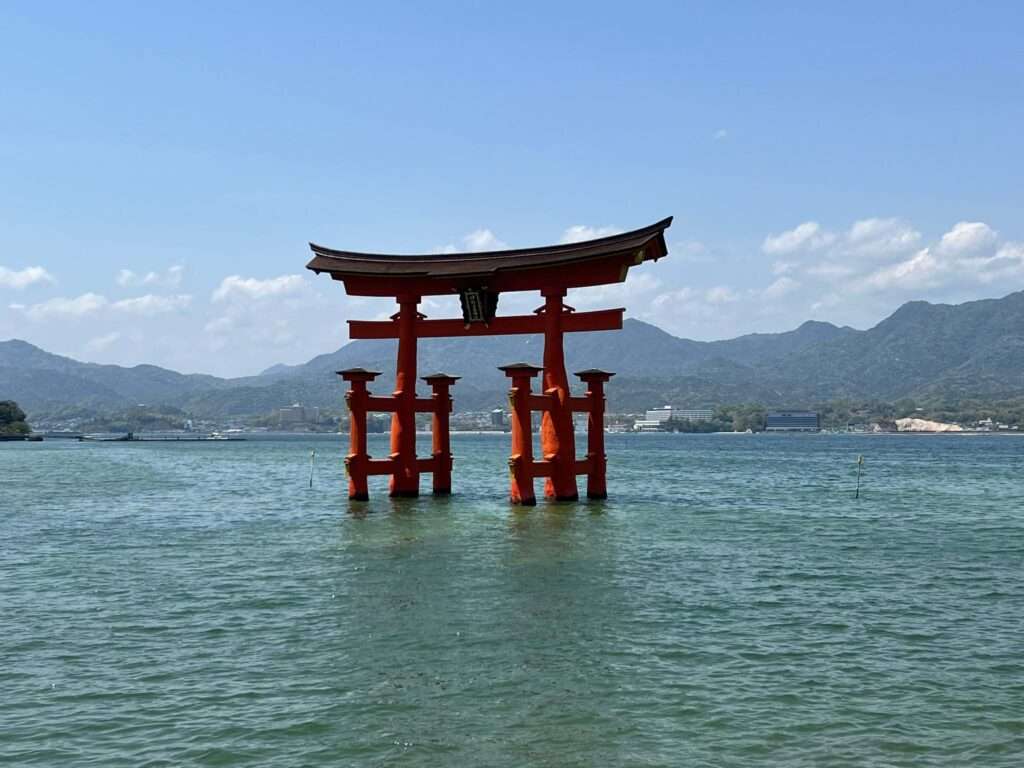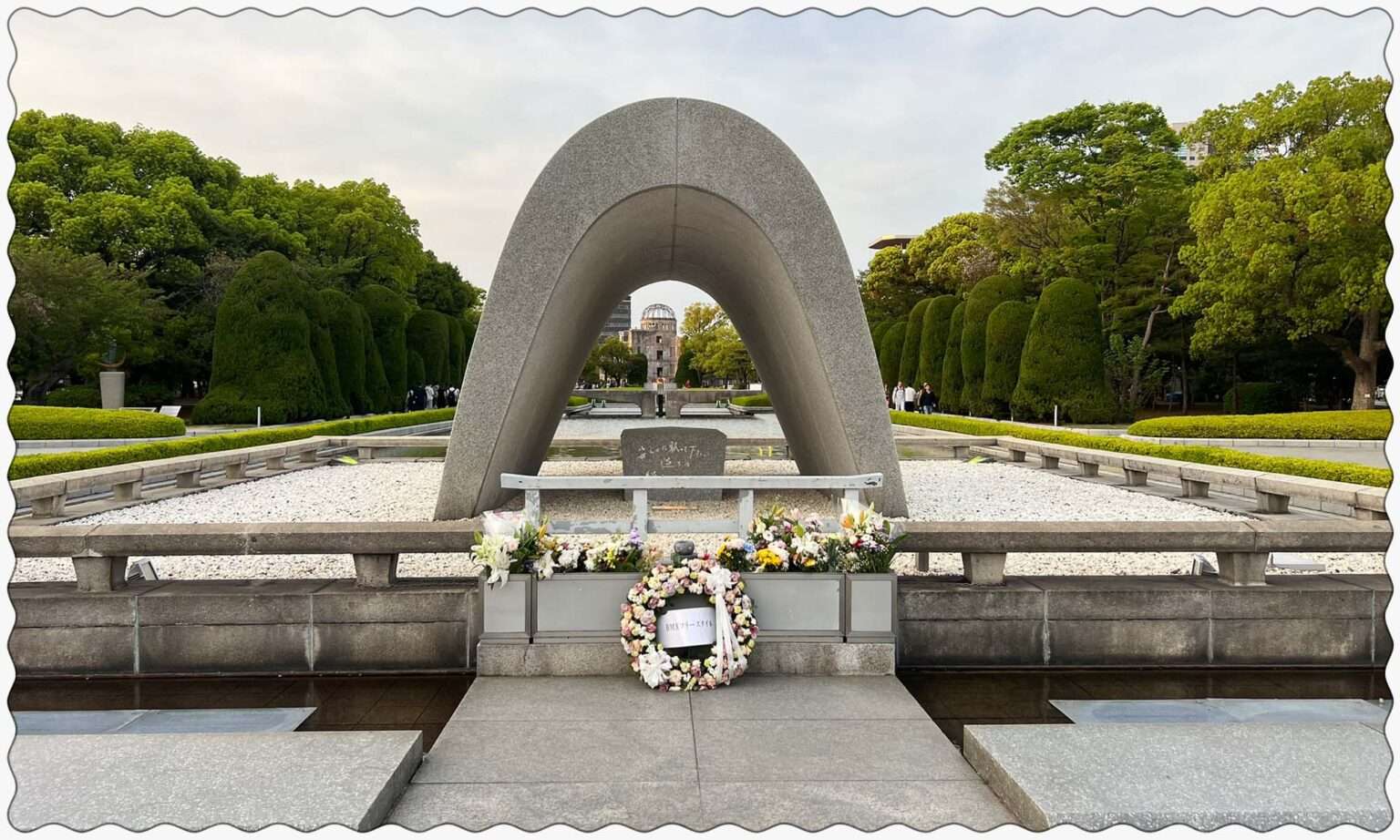Hiroshima, Japan was the home to important military headquarters and served as a logistical hub for supplies during World War 2. It was on the list of cities for the U.S. to drop the atomic bomb to end the war, and on August 6th 1945 the U.S. military plane Enola Gay dropped the first atomic bomb “Little Boy” on Hiroshima’s approximately 350,000 residents. The destruction from the bomb was immense, and it was believed to have destroyed 70% of the city’s buildings. While exact statistics are not known, there are estimates that 70,000 people died instantaneously with less than 10% of the casualties being military. In the days, months, and years to come there was an enormous toll on the surviving population as they dealt with the fallout from the effects of the initial nuclear radiation.
Destination Overview
Himeji, Hiroshima, and Miyajima
This year (2025) marked the 80th anniversary of the bomb’s destruction, and today Hiroshima, Japan is a thriving city of about 1.2 million people famous for its version of okonomiyaki (savory Japanese pancake). Since the U.S. planned to occupy Japan after the war, the bomb was detonated several hundred meters in the air, meaning the majority of the radiation was pulled into the atmosphere rather than deposited into the soil. This enabled the city to re-build in a relatively short time period which is a point of pride for the Japanese that live there, and today it is officially designated as a peace city which attracts visitors from all over the world. Within the center of Hiroshima near the bomb epicenter is the Peace Memorial Park and Peace Memorial Museum. Both are powerful commemorations to those that suffered from the blast and that promote the hope for the abolition of nuclear weapons.
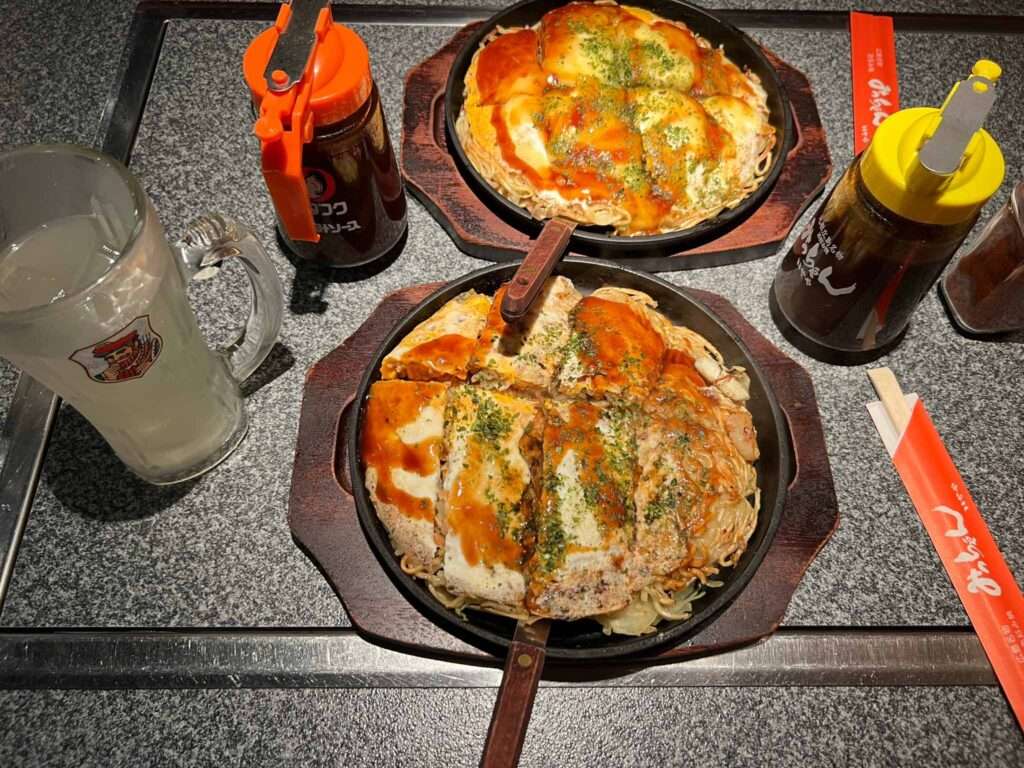
On our way to Hiroshima from Kobe we decided to stop in the small city of Himeji known for its well preserved Himeji Castle. The initial castle was built in the 1300s but was then re-built completely or remodeled many times until the early 1600s. From then on, the castle has remained intact and survived World War 2 bombings as well as large earthquakes. While we had visited a few castles already in Japan, we wanted to stop at this one since it was the largest and most visited in the country. We were arriving in Himeji from the nearby city of Kobe which enabled us to arrive shortly after opening. We had heard that it gets so crowded that they restrict entrance to the castle completely throughout the day.
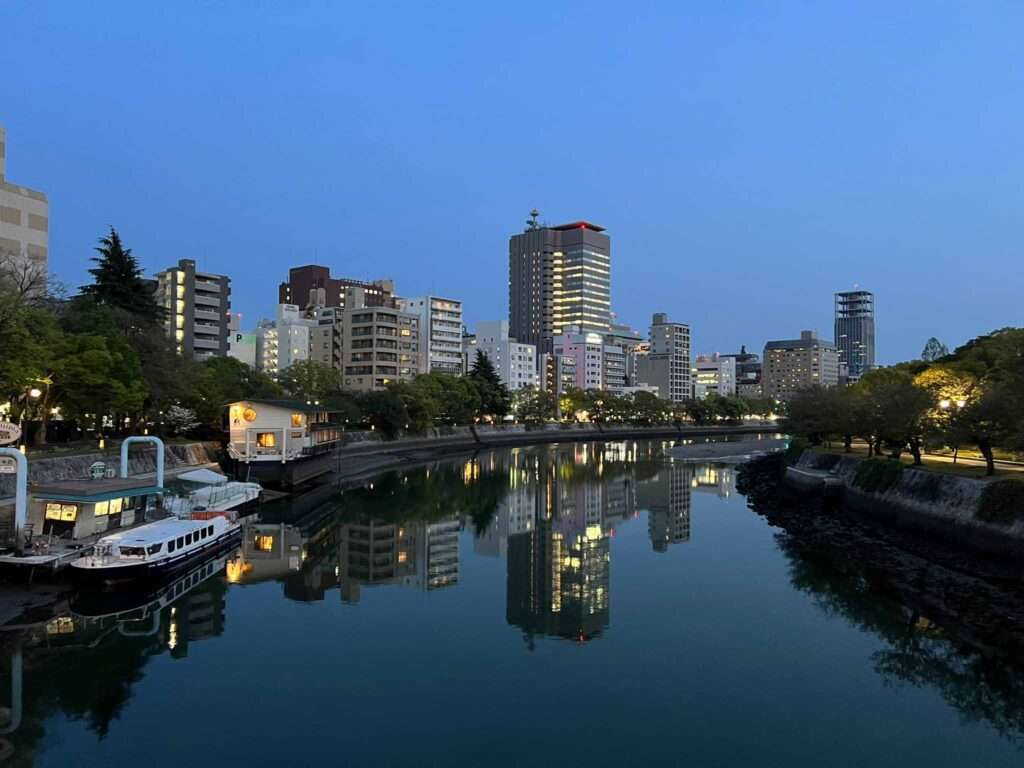
Normally we have been leaving our bags at hotels in Japan when exploring, but since we were going to Hiroshima later in the day, we took advantage of the lockers at the Himeji train station. Almost all major train stations have lockers in Japan, and they are a seamless way to store your belongings while in-between accommodations. Arriving early to Himeji Castle was a good decision because we had the grounds mostly to ourselves to take in the incredible vantage points of the enormous castle. As we climbed up the 6 floors of the castle, we heard an announcement restricting the entrance temporarily. We were able to enjoy the views and visit the gardens mostly by ourselves too while the majority of the people made their way through the castle. We enjoyed seeing the advanced defense systems and some of the over 80 rooms in the impressive Himeji castle network. After a great time exploring, we went back to town and had a delicious bowl of ramen. From there, we easily collected our bags and boarded our train to visit Hiroshima.
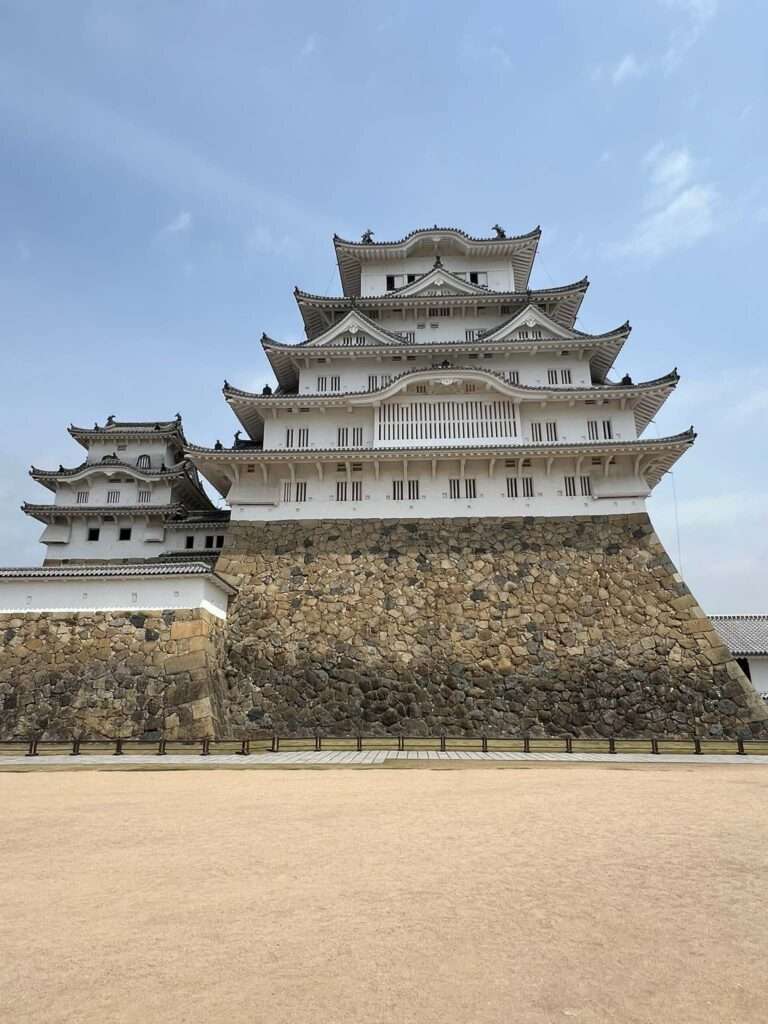
Where to Read More
An Interesting Fact
Hiroshima Hopes for the Abolition of Nuclear Weapons
On our first night in Hiroshima we participated in a Peace Walking Tour led by Chisa, who grew up in Nagasaki, the second city that was destroyed by an atomic bomb. The tour was intended to educate on the impact of the atomic bomb, share about hope for the abolition of nuclear weapons, and provide information on modern life in Hiroshima. We started our walk near the Hiroshima Castle which along with much of the city was re-built after it was destroyed by the bomb. However, within the park our guide pointed out the ruins of the Imperial Army Headquarters to show a building that was not reconstructed. At the halfway point of the tour we stopped in the Hiroshima Gate Park to learn the World War 2 context from a Japanese point of view. The end of the tour took us to the famous Peace Memorial Park in the center of the city. It is here that the most moving tributes to the victims of the atomic bomb exist.
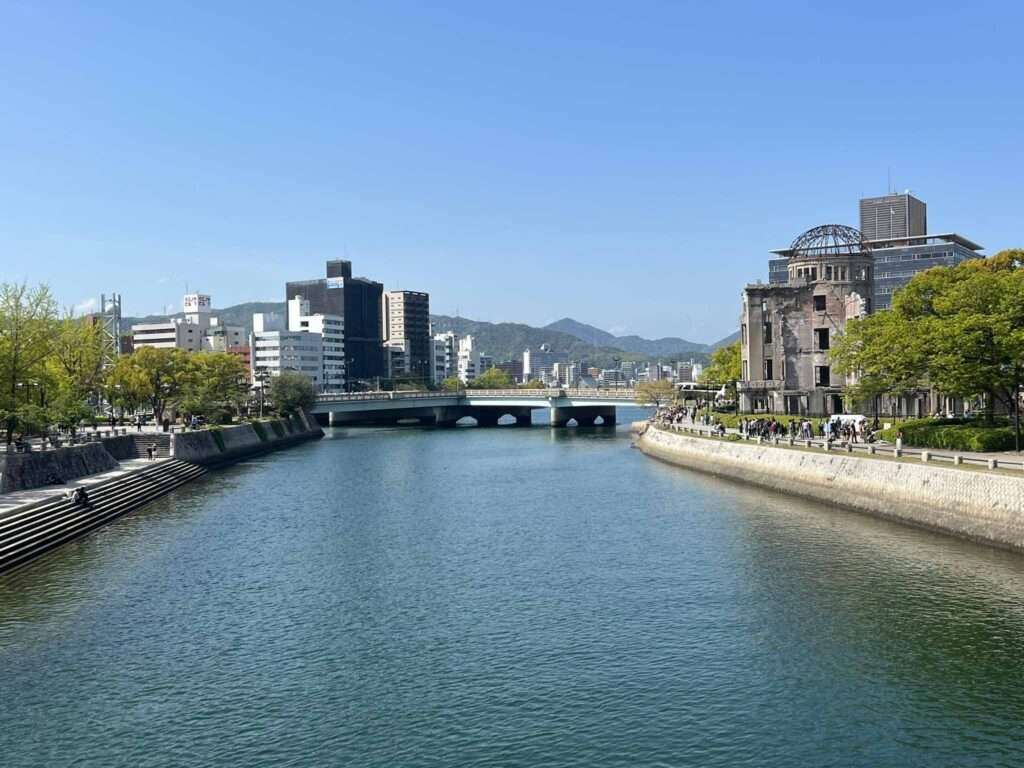
While the majority of the park is beautiful, one eerie reminder remains of the destruction at the former Industrial Promotional Hall, now known as the Atomic Bomb Dome. The shell of the building shows all that was left, and is a stark contrast to the nearby modern Hiroshima Orizuru Tower. At the conclusion of our tour in front of the Pond of Peace, Chisa left us with a message of hope and reiterated the sentiment of the city for a future free of the destruction of nuclear weapons. She also recommended us to visit the Hiroshima Peace Memorial Museum to learn further about the impacts of the atomic bomb.
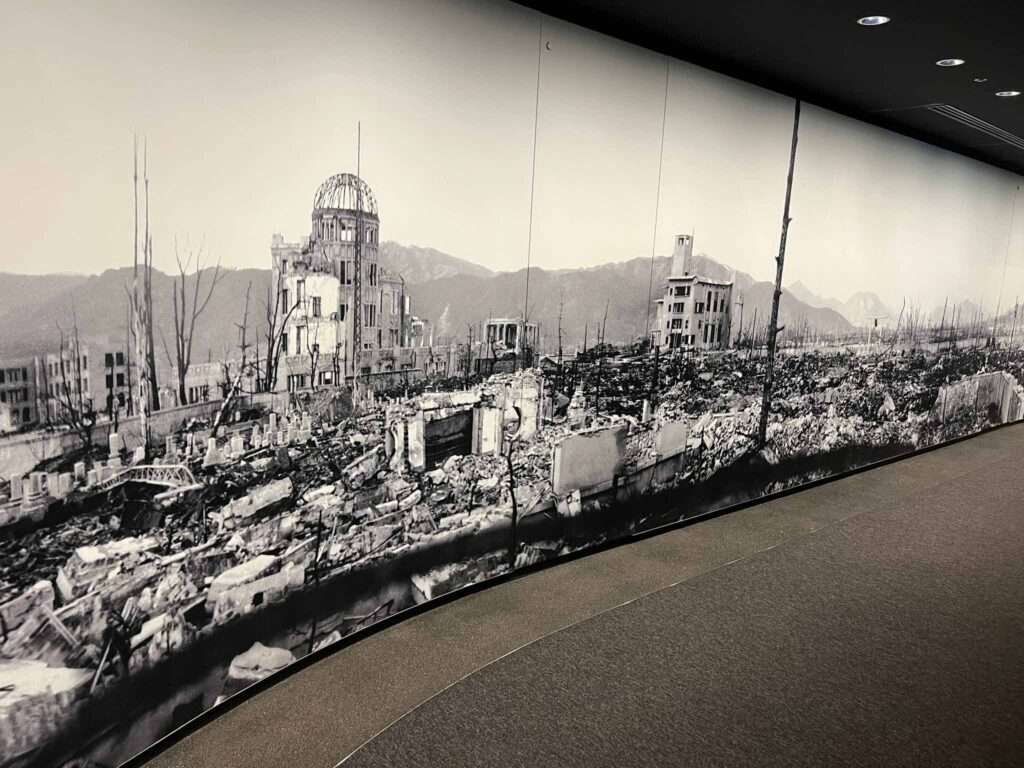
We were warned prior to going to the Hiroshima Peace Memorial Museum that it was a heavy museum that shows in graphic detail the destruction of the atomic bomb. The start of the museum shows a picture of the city prior to the bomb and then a clock dated August 6th is on the wall prior to displaying the image of the city completely in ruins after the detonation of the bomb. The remainder of the museum includes chilling exhibits with displays of people’s burned clothes, warped metal objects, a human shadow etched in stone, depictions of black radiation rain, countless images of burned people, and statistics about sickness years later. This is not a light experience, but the end the museum concludes with an educational exhibit reiterating the dangers of nuclear weapons. It strives to highlight the need to de-arm and prevent this from ever happening again. After visiting the museum, we walked around the Peace Memorial Park. Here there are more uplifting tributes to the victims such as the Gates of Peace, Flame of Peace, Children’s Peace Monument, and many others. Overall, the message of peace shines above the destruction, and delivers hope for a better future.
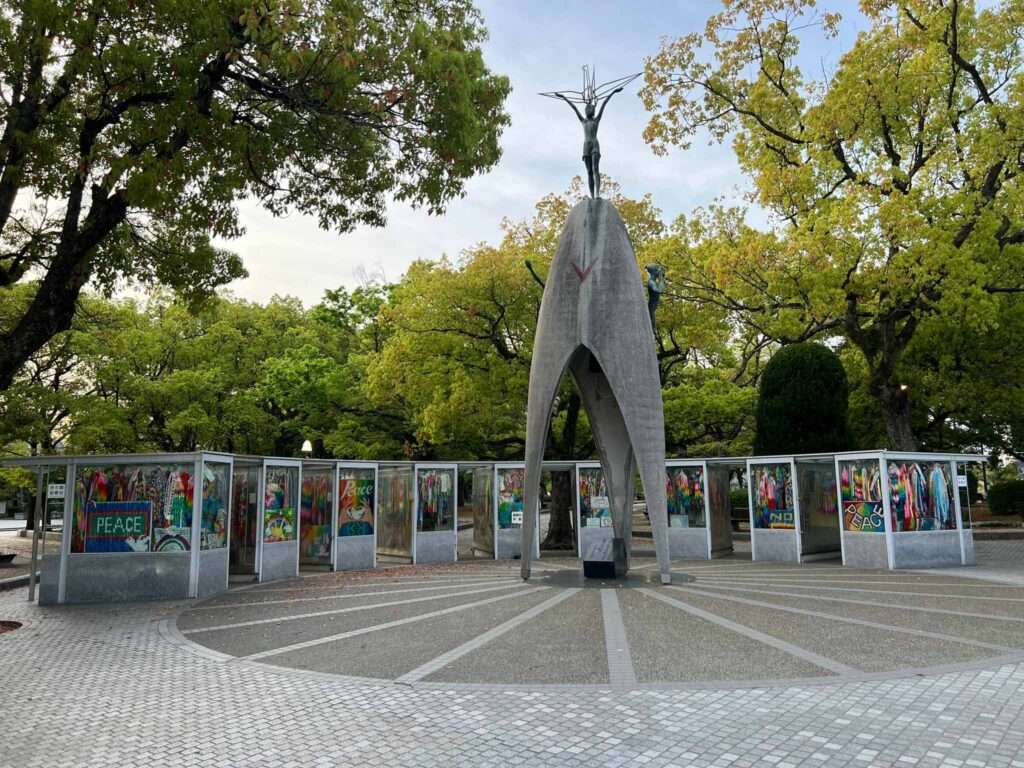
Travel Tip of the Week
Miyajima is a Great Day Trip When Visiting Hiroshima
Itsukushima, or more commonly referred to as Miyajima (shrine island), contains one of Japan’s most recognizable torii gates.. When it is high tide the Otorii Gate appears to be floating in the water, and is a favorite spot for photographers. The island is only about an hour away from Hiroshima, and is the perfect place to visit for a great day trip when visiting the city. The easiest option to reach the island is to take a scenic ferry that leaves from the Motoyasu River near the Peace Memorial Park. However, a more economical option is to take the train from Hiroshima Station to the Miyajima Ferry Terminal and take a short boat ride to the island. Besides being a better price, there are more ferry times from Miyajima Terminal and the scenic ferry from Hiroshima tends to sell out.
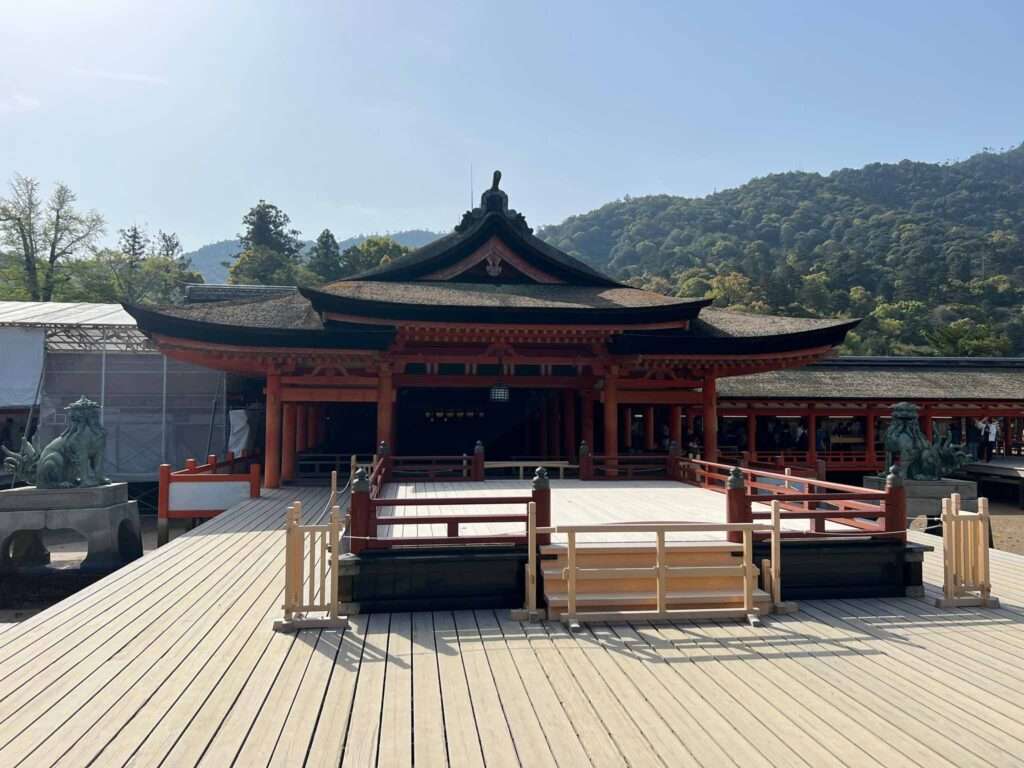
We decided to take an early morning train to Miyajima to beat the crowds, and when we arrived the majority of the town was still getting started for the day. It was nice to enjoy the calmness of the quaint island town and spot a few of the resident deer that were also starting their day. The only downside to arriving early was that it was low tide, but it was still fun to see the iconic Otorii Gate not floating. After admiring the gate, we entered the Itsukushima Jinja and had the majority of the shinto shrine to ourselves. We also learned that we could come back later in the day with our tickets. After a peaceful start to the day, we walked to the Miyajima Ropeway. Since it was a relatively clear day, we bought tickets to go up to the Shishiiwa Observatory. The views at the top were stunning, and we admired the many islands sprawling in the bay below. The lush green forests were also beautiful, and we saw that there were hiking trails up to higher mountain shrines.
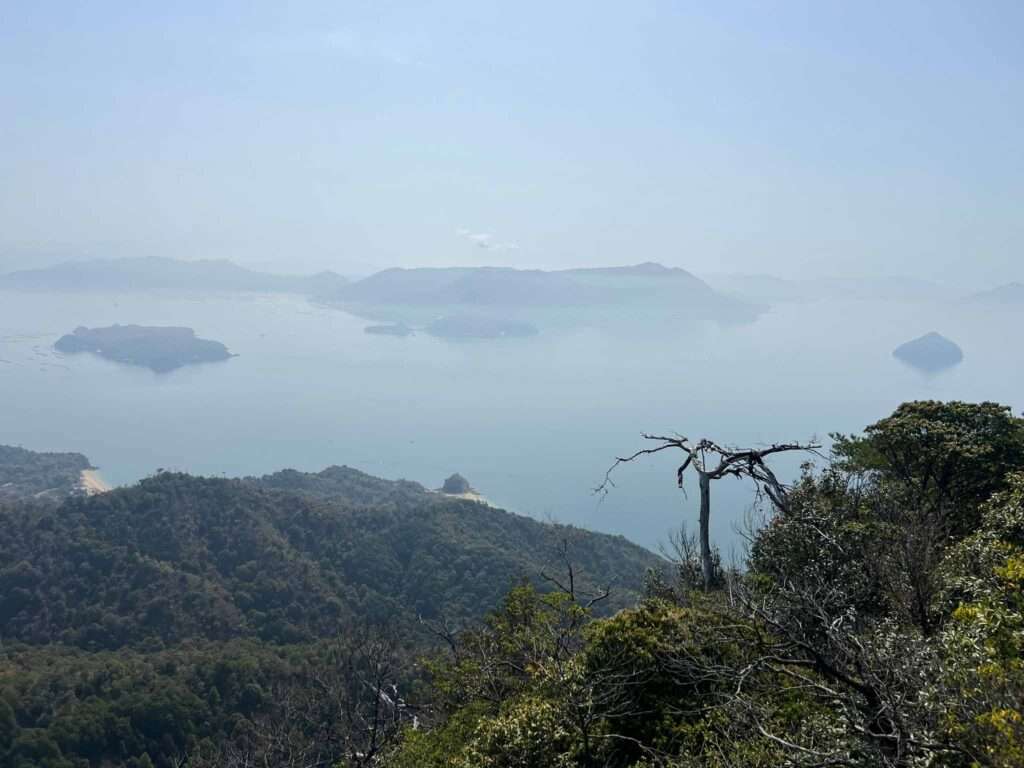
Normally we would have done the hiking trails, but we wanted to return back to the Otorii Gate at high tide which didn’t leave enough time to explore the mountain. When we arrived back at the Itsukushima Jinja there was an enormous line to buy tickets. We were thankful to have had our tickets already, and appreciative that we visited the shrine before it was completely packed. There were enormous lines to take a photograph at the most iconic place in the temple, but there were plenty of spaces all around the general area to admire the incredible site of floating Otorii Gate at high tide. After enjoying the views, we went into town to sample some of the island specialities. We tried their famous oysters, unique Momiji manjū leaf shaped pastry, locally made craft beer, and delicious oyster curry bread. As we wrapped up our day trip to Miyajima we went to the scenic ferry terminal to try to ride back to Hiroshima on a different route. We were in luck because it was the last available time slot that wasn’t sold out for the day. As we approached Hiroshima Peace Park from the river we could admire it from a different view, and the central dropoff location was a convenient place to return from a great day trip.
